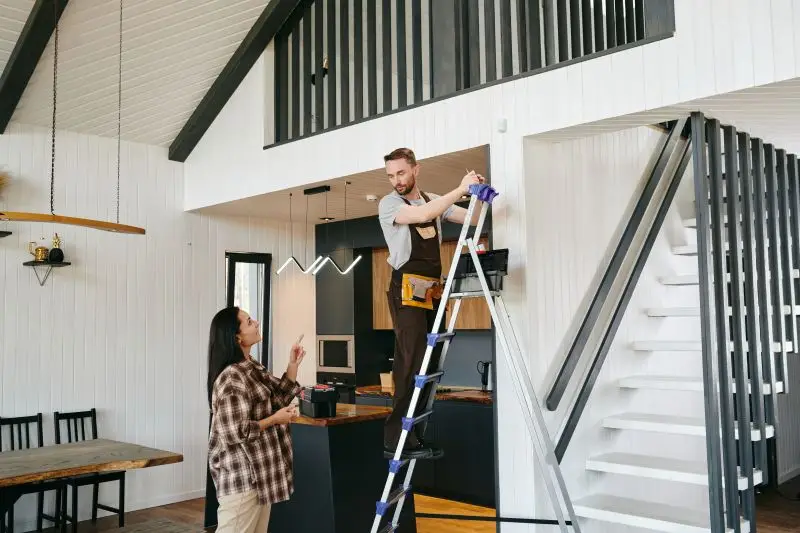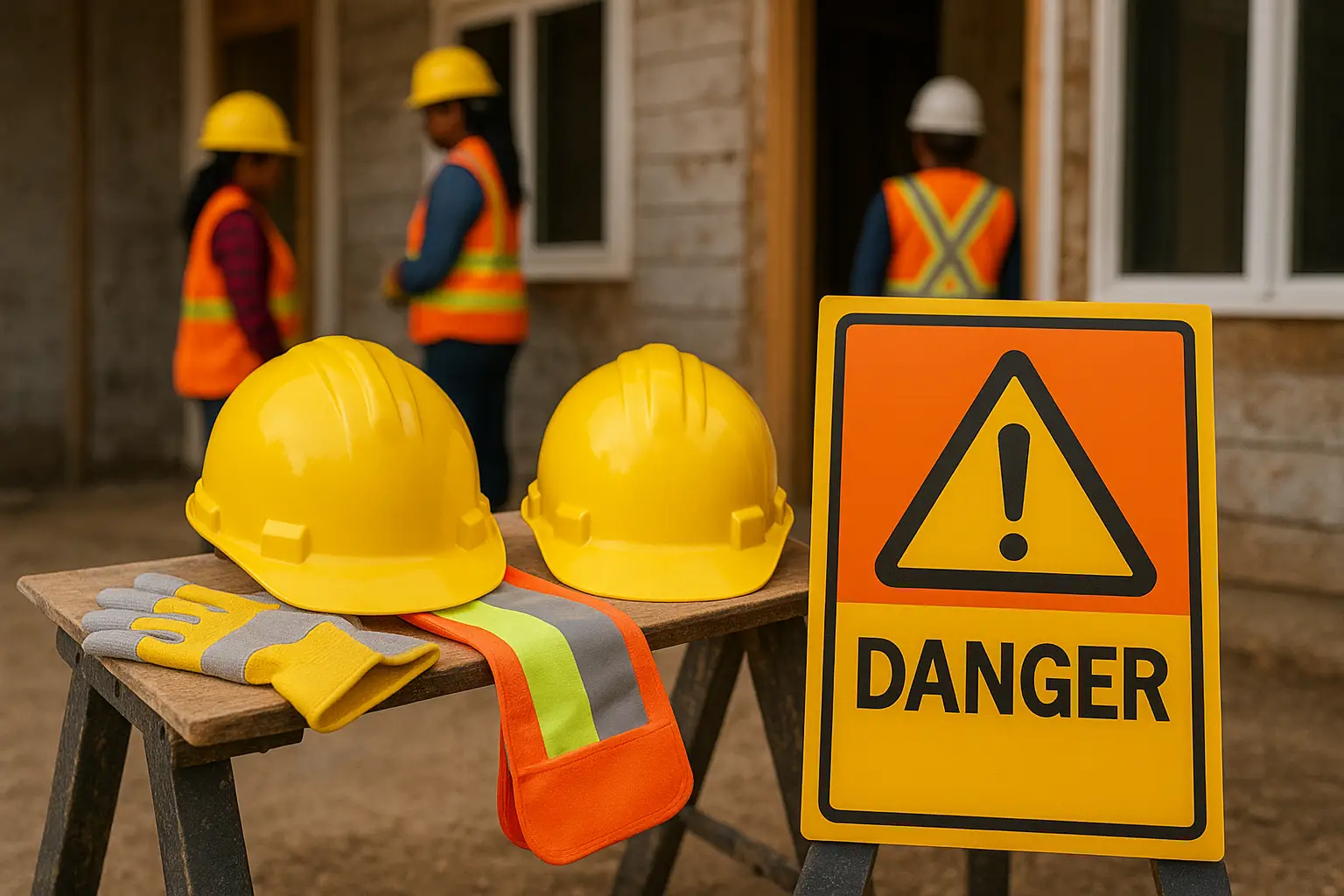Protecting Yourself: Understanding Homeowner Liability When Hiring Contractors in Orange County

When you're planning that dream kitchen renovation or finally tackling those roof repairs, hiring the right contractor is just the beginning. What many California homeowners don't realize is that understanding homeowner liability when hiring contractors and the Privette Doctrine protections is crucial, as even with licensed, insured contractors, certain situations can still expose you to legal liability. Understanding these risks isn't about creating fear—it's about empowering you to make informed decisions and protect your investment.
The Foundation of Protection: California's Privette Doctrine

California homeowners benefit from strong legal protections established by the landmark California Supreme Court ruling. This Privette Doctrine generally shields homeowners from liability when independent contractors or their workers are injured on your property. The principle is straightforward: professional contractors are responsible for maintaining their own safety standards and protecting their workers.
However, this protection isn't absolute. There are specific circumstances where liability can shift back to you as the homeowner, and understanding these exceptions is crucial for your protection.
When Homeowner Liability Kicks In: Three Critical Scenarios

1. Overstepping Your Role as the Property Owner
The Risk: Taking too much control over how contractors perform their work can expose you to liability.
What This Looks Like:
- Insisting contractors use your old or potentially unsafe equipment
- Dictating specific unsafe work methods
- Forcing contractors to take shortcuts that compromise safety
- Providing faulty tools or equipment
Real-World Example: Imagine you have a 40-year-old extension ladder in your garage and insist your roofer use it instead of their professional equipment. If that ladder fails and causes injury, you could be held responsible because you provided unsafe equipment and insisted on its use.
Protection Strategy:
- Respect your contractor's professional judgment regarding tools and methods
- Never provide equipment to contractors—let them use their professional-grade tools
- If you have concerns about their approach, discuss them openly rather than imposing solutions
- If a contractor can't adequately address your safety concerns, consider finding a different professional
2. Failing to Disclose Known Hazards
The Risk: You have a legal duty to warn contractors about dangerous conditions you're aware of on your property.
Hidden Dangers Include:
- Structural damage (rotted beams, compromised roofing)
- Electrical hazards
- Plumbing issues that could cause flooding
- Environmental hazards (asbestos, lead paint)
- Unstable surfaces or flooring
Real-World Example: You know there's a section of your roof that's been weakened by a persistent leak, but you don't mention it to the contractor you've hired to replace shingles. If they step through the compromised area and fall, you could face liability for not disclosing the known hazard.
Protection Strategy:
- Create a comprehensive list of known issues before contractors arrive
- Walk through the property with contractors and point out potential hazards
- Clear walkways of tripping hazards like rugs, toys, or garden tools
- Ensure pets are safely contained away from work areas
- Document your hazard disclosures in writing
3. Engaging in Illegal or Non-Compliant Activities
The Risk: Violating building codes, safety regulations, or engaging in unpermitted work can make you liable for contractor injuries.
Common Violations:
- Performing major renovations without proper permits
- Ignoring building code requirements
- Concealing known code violations
- Working with unlicensed contractors on projects requiring licenses
Real-World Example: You're converting your attic to living space without permits and fail to mention that the electrical work hasn't been updated to code. If a contractor receives an electrical shock from unsafe wiring, you could be liable because you violated regulations and didn't disclose the hazard.
Protection Strategy:
- Always obtain required permits before starting work
- Be transparent about any existing code violations or unpermitted modifications
- Encourage contractors to survey the work area for safety issues before beginning
- Work only with properly licensed contractors for projects requiring licenses
Your Shield: Proactive Protection Strategies

Before the Project Starts
Documentation is Key:
- Keep records of all permits and approvals
- Document pre-existing conditions with photos
- Create written records of hazard disclosures
- Verify contractor licensing through the California State License Board
Communication Protocol:
- Schedule a thorough walk-through before work begins
- Discuss any concerns openly and honestly
- Set clear expectations about safety responsibilities
- Establish protocols for reporting new hazards discovered during work
During the Project
Maintain Appropriate Boundaries:
- Resist the urge to micromanage work methods
- Address concerns through discussion, not directives
- Allow contractors to use their professional equipment
- Avoid making real-time changes that could affect safety
Stay Alert to New Developments:
- Be aware of newly discovered hazards
- Communicate any changes in property conditions immediately
- Document any incidents or near-misses
Contract Considerations
While the Privette Doctrine provides strong protection, a well-drafted contract can provide additional safeguards:
- Indemnification clauses where contractors agree to hold you harmless for work-related injuries
- Insurance requirements specifying minimum coverage levels
- Safety protocol agreements outlining respective responsibilities
- Hazard disclosure acknowledgments documenting your communications about property conditions
For guidance on Orange County building permits and requirements, visit the Orange County Building Department website.
The Bottom Line: Knowledge is Your Best Protection
Understanding homeowner liability when hiring contractors in California and how the Privette Doctrine applies isn't about living in fear—it's about making informed decisions that protect both you and the professionals working on your property. By respecting professional boundaries, maintaining open communication about hazards, and ensuring all work complies with local regulations, you can confidently move forward with your home improvement projects.
Remember, the goal isn't to eliminate all risk (which is impossible), but to understand your responsibilities and take reasonable steps to fulfill them. When you work with licensed, insured professionals and follow these guidelines, you're building on a foundation of legal protection that has served California homeowners well.
Ready to Move Forward with Confidence?
Master Build Advisor provides expert guidance to help Orange County homeowners navigate the complexities of contractor selection and liability protection. Our comprehensive advisory services ensure you understand your responsibilities and make informed decisions that protect your investment.
Our advisory services include:
- Pre-project liability risk assessments
- Contractor vetting and qualification guidance
- Building code and permit requirement consultation
- Contract review and safety protocol recommendations
Need expert guidance on your next project?
Get Your Free Consultation TodayLearn more about our comprehensive approach in our guide to planning the perfect remodel.
